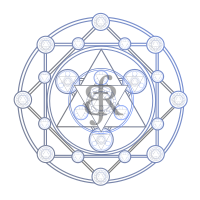This is the first of four excerpts from Displacement, which hits the shelves February 11, 2020. Come back next Saturday for more!
***
The klaxon sounds and the yellow lights swing into life, rotating shadows around the concrete room. Thirty seconds.
Less than three months ago, he’d received a curious late-night phone call. Was he prepared to serve at the pleasure of the president, they’d asked. After a tentative yes, he’d been picked up by a uniformed man in a black SUV like something out of a Cold War cliché. But aside from the non-disclosure agreements and the substitution of Department of Energy staff scientists for grad students and postdocs, it had been pretty similar to his work at the university. In all honesty, the weapon had been nearly complete when they’d shut down the project in the early ’90s, he’d just picked up the last few pieces and added more and better data to the projections. Solved a few problems that had been giving them grief.
And now they’re going to throw the first switch.
The lights change from amber to red. Ten seconds.
Ideally, there shouldn’t be any shockwave or seismic response. That’s part of what makes the Displacement Engine such a terrifying weapon. One moment the bomb will be there, nestled in its underground room at the end of a mile-and-a-half-long tunnel; the next, there should be nothing but neutrinos and weakly-interacting particles and the general, low-level hum of the universe. It should simply annihilate anything within a hundred-meter radius, and replace it with matter that, well, doesn’t matter. Not to us, anyway. If he’s done his job. If the math is right.
A word comes to mind unbidden—Baneberry, an underground test that hadn’t stayed as underground as promised—and he closes the viewing port. Maybe the shielding is a better idea after all. He checks his watch and waits for zero.
Three, two, one.
There’s the faint buzzing of a switch being thrown in another room. The video cameras targeted at the engine go white, then it’s all static and nothing else. No blast, no shake.
For five minutes readings are taken around the perimeter. The sensors that should have been knocked out are out, the ones that remain indicate that the radiation levels are all within tolerances. Not even a little spike. He opens the viewing port.
Something isn’t right.
There’s no depression in the ground.
The land for nearly a dozen miles to the north is pockmarked with cave-ins and subsidence—could the Engine have failed? Or was the reaction so perfectly gentle as to leave every grain of sand in place above the bedrock?
He checks the cameras in the tunnel, spaced every fifty meters down the shaft alongside sensor bundles. Clear. Clear. Clear.
And then the impossible.
The klaxon whoops out the “all clear” as he sprints through the bunker’s halls and out across the sunlit earth to the tunnel. He needn’t have rushed—a series of scrub teams is checking each progressive set of doors down the shaft he spent so many hours at the end of, an interminable delay at each, checking for radiation, blast damage, chemical residues. But there’s something beyond the fourth blast door he needs to see. Something on the camera. It can’t have been right. It was too dark to really see. The longer he waits, the more he’s sure he must have imagined it.
The final, massive bulkhead slides sideways into the tunnel wall, and the smell of dust and dry underground air gives way to something wholly alien, something entirely out of place. Five meters into the next section, the shaft ends in the wall of a massive, spherical cavern.
He calls for a light and someone runs for one.
The cavern is perfect. That much had been within the realm of possibility. That much would at least have made sense: the Engine’s work, his work, had been so precise that it had produced a perfect sphere of space in the bedrock. A perfect dome deep underground. That alone would have been a thing of beauty. To think of all the physics it would prove at once…
But the weak light from the tunnel behind him makes indistinct shapes in the cavern, makes a reality of what he saw in the dim infrared of the camera. From the darkness comes the smell of greenery, the whisper of leaves, the unmistakable thrum of a forest at night.
He positions the tripod and turns on the light.
It’s January 2, 2002.
The Displacement Engine will never be tested again.
***
Displacement comes out February 11, 2020! Check back for more excerpts every Saturday, and for other posts on Tuesdays and Fridays!







5 thoughts on “The Test”
Comments are closed.